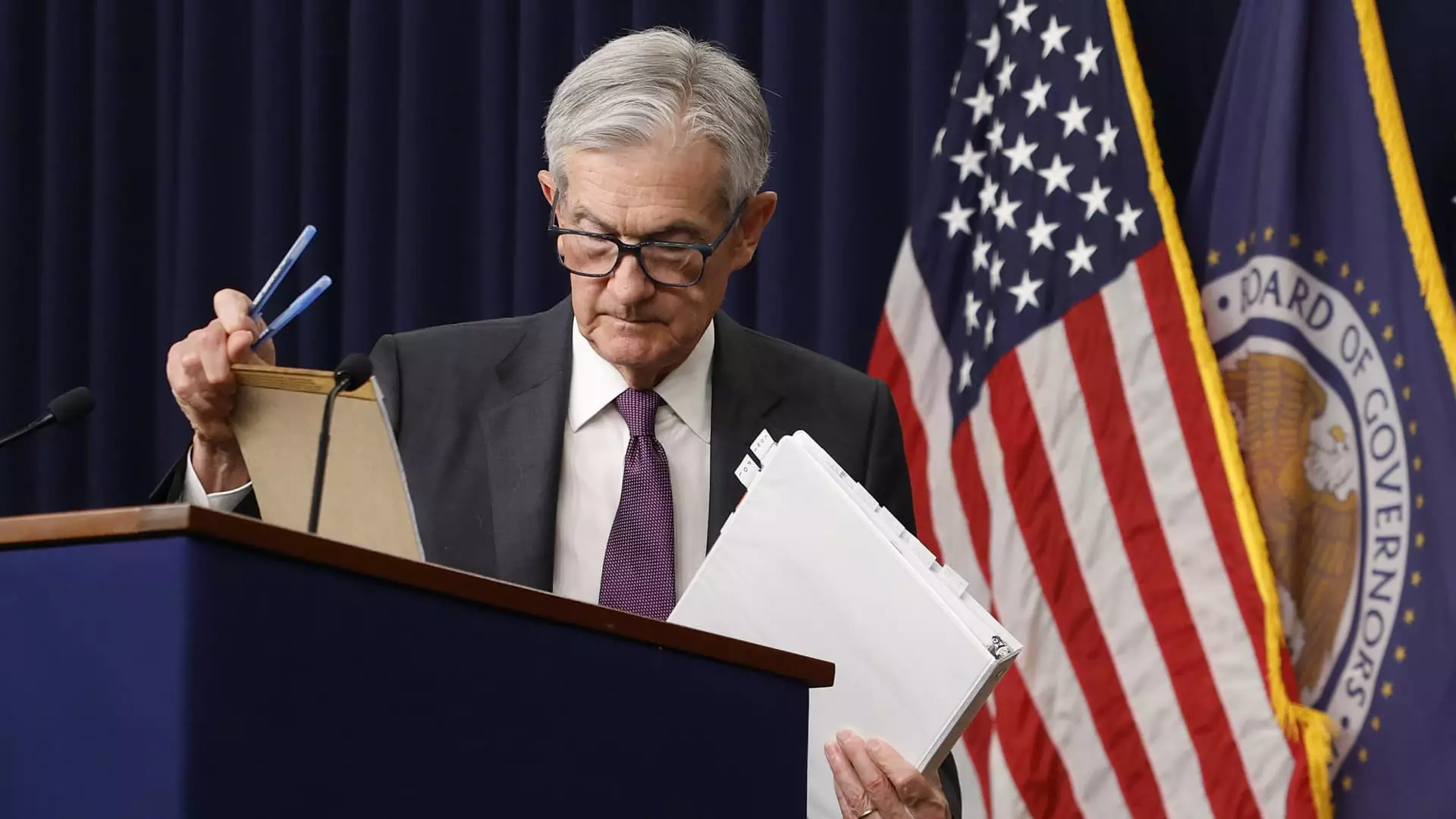In a world wrestling with economic volatility, the recent remarks from Federal Reserve Chair Jerome Powell serve as a stark reminder of the delicate balance policymakers must navigate. As inflation indicators rise alongside uncertainties stemming from tariffs, the Fed finds itself grappling with a two-pronged challenge: how to keep inflation in check while simultaneously fostering economic growth. This ideological tug-of-war is more than just a monetary policy puzzle; it reflects a deeper concern about how the choices made by the Fed may have ramifications that ripple through the entire economy, influencing everything from consumer behavior to job security.
The importance of Powell’s speech lies not only in the admission of potential conflict between inflation control and economic growth but also in the underlying anxiety regarding President Trump’s trade policies. By introducing tariffs, the government has more than just increased prices on imports; it has created an environment of uncertainty for businesses and consumers alike. This unpredictability casts a shadow over the prospects of sustainable economic growth, leaving the Fed to speculate about when and how it may need to adjust its policy stance.
Tariffs: A Double-Edged Sword
The reality is that tariffs essentially work as a consumption tax, driving up prices for households and businesses. While Powell acknowledged that the immediate effects of tariffs might be temporary, he also warned that their long-term inflationary impact could disrupt the delicate equilibrium the Fed strives to maintain. In a moment when average Americans are trying to make ends meet, any hike in consumer prices can take a significant toll on disposable income, curtailing spending and ultimately damaging economic growth.
The ongoing trade disputes have sparked fears that inflation could exceed the Fed’s target rate of 2%. The dual concern of rising inflation and stagnating growth indicates that potential pitfalls lie ahead. Powell’s cautionary remarks challenge us to consider: How much room does the Fed really have to maneuver in this tightening economic landscape? Will the pressure to support growth lead the central bank down a road of unrestrained monetary easing, risking an even larger inflation overshoot in the future?
An Economic Landscape in Transition
The broader economic indicators present a mixed picture. On one hand, recent reports showed an unexpected uptick in retail sales, driven in part by consumers making purchases in advance of looming tariffs. Conversely, the anticipated sluggish GDP growth for the first quarter reminds us that consumer confidence can be a fickle friend. While vehicle sales and retail expansions paint a hopeful transit, the outlook remains cautionary. Powell has indicated that signs point toward a slowdown, and slowdowns carry their own heavy burdens—job losses, diminished investment, and increased uncertainty.
For economists, the interplay between consumer confidence and policy implications creates an intricate web of consequences that must be navigated carefully. Many believe growth must be supported with the right fiscal measures, while simultaneously managing inflationary expectations. In that light, Powell’s declaration that “We may find ourselves in a challenging scenario in which our dual-mandate goals are in tension” encapsulates the ideological debates raging not just within economic circles but throughout society at large. Are we sacrificing long-term sustainability for short-term gains?
Interest Rates: The Fed’s Balancing Act
As we watch the possibilities unfold, the key question remains: What direction will interest rates take? Powell’s assertion that the Fed is poised to wait for greater clarity suggests an air of patience and caution, not necessarily a licensing for exuberance. The speculation surrounding potential rate cuts is tantalizing but equally fraught with risks. A lower rate may stimulate borrowing and spending, but it could also fuel inflationary pressures if the economic environment becomes more unstable or if consumer behavior shifts unpredictably.
Market movements in response to Powell’s speech—stocks tumbling, Treasury yields dipping—underscore this point succinctly. Investor sentiment can swing rapidly, responding not just to economic data but to the broader perceived stability of fiscal policy. As the Fed continues to ponder the most prudent course of action, it must consider not merely the numbers on economic spreadsheets but the tangible impacts of its decisions on people’s lives.
A Warning for Future Policymakers
The situation elucidated by Powell signals more than just short-term unease; it’s a call to arms for the future of economic policymaking and governance. There is a need for a more nuanced approach to trade and fiscal policy that takes into account the complexities of modern economies. Monopolistic tendencies in certain sectors, including tech and manufacturing, further complicate an already fragile equation.
Ultimately, Powell’s insights highlight that the challenge lies not just in measuring inflation and growth but in navigating the human consequences of these statistics. The coming months may outline a new chapter in economic history, one where policymakers must prioritize adaptability and foresight above all else, or risk plunging into an era of economic malaise wrought by miscalculations and indecision.

